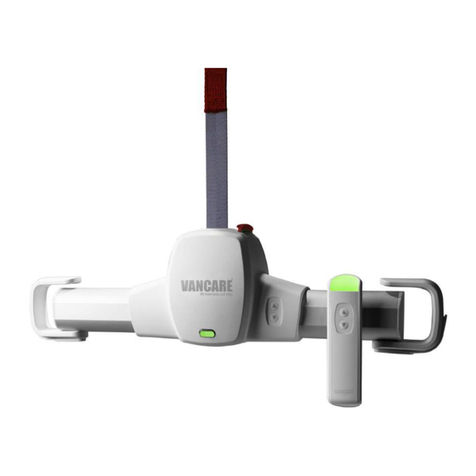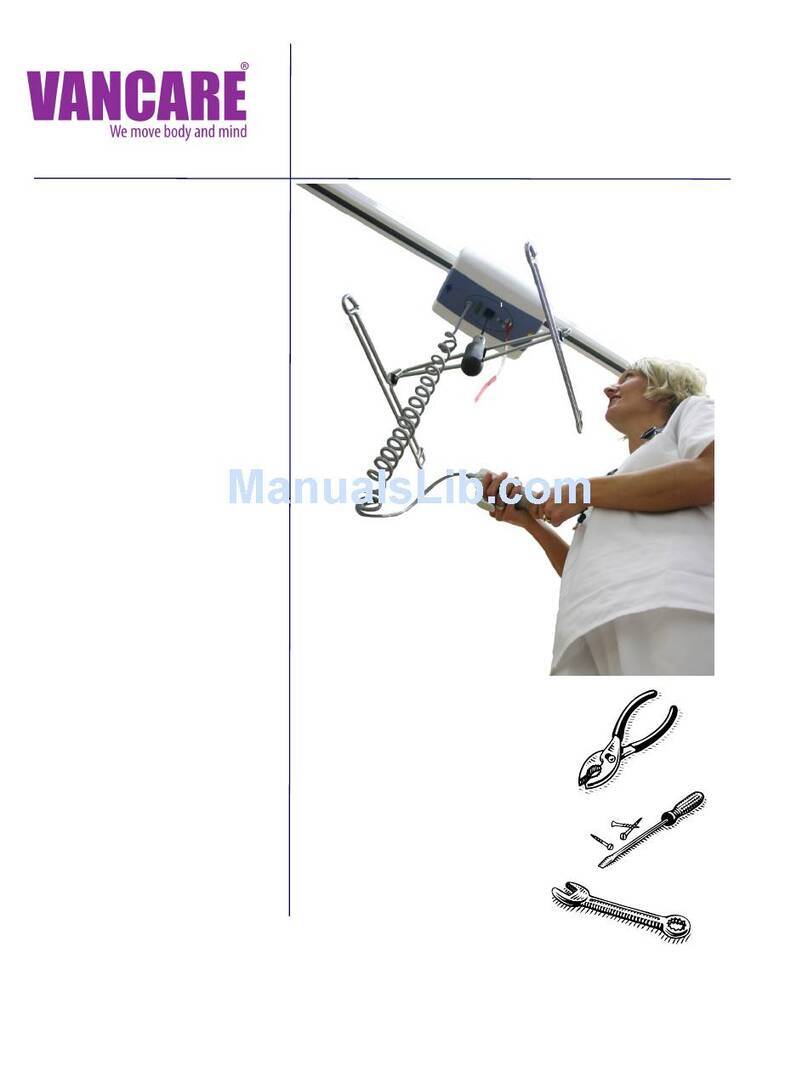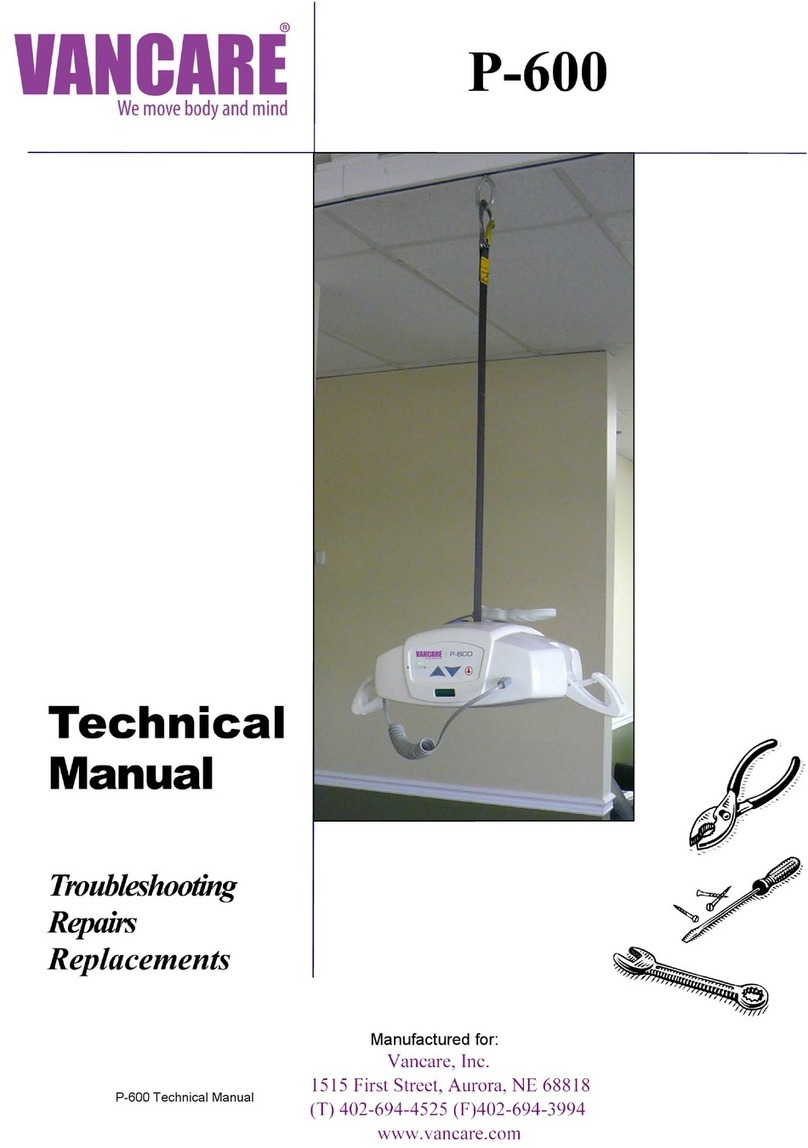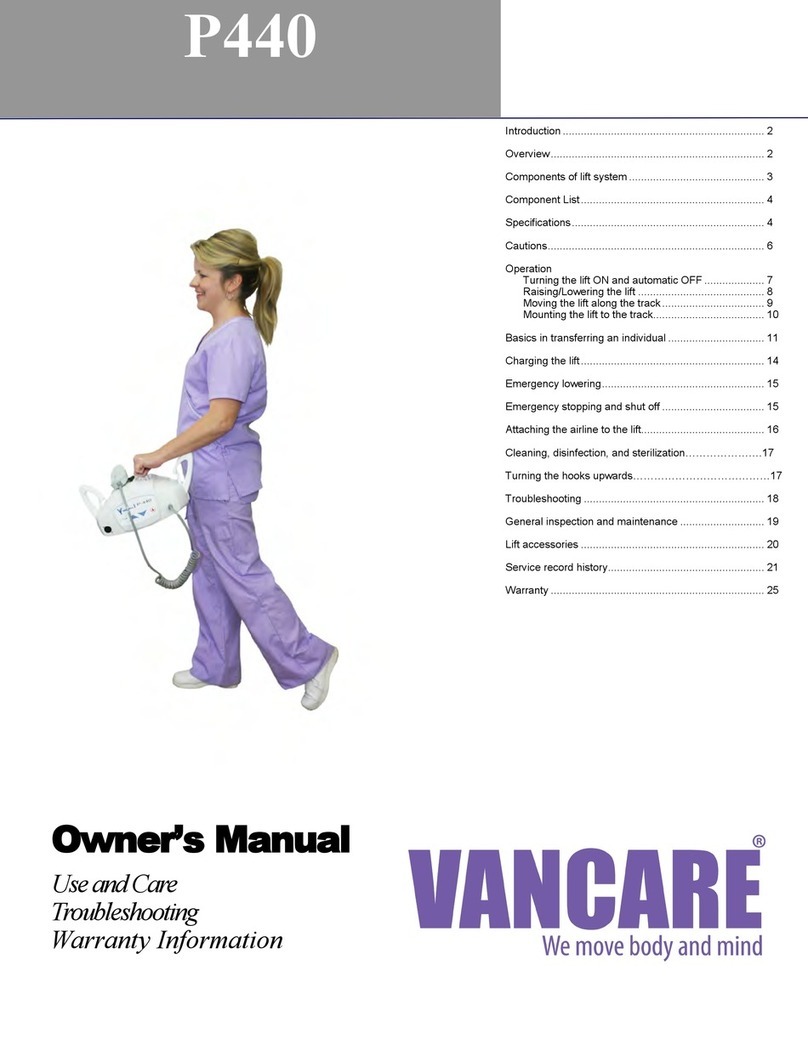
It is also required that qualified maintenance staff inspect the lift at least monthly for
missing parts and excessive wear that might cause the lift to fail. A permanent record of
each of these inspections and repairs made should be kept by the facility. (See Monthly
VANDER-LIFT II™ Inspection Checklist at the back of this manual.)
It is also required that a nurse or professional rehabilitation staff member inspects all
VANDER-LIFT II™ slings for the above types of damage at least monthly. A permanent
record of each of these inspections and action taken should be kept by the facility. (See
Monthly VANDER-LIFT II™ SLING Checklist at the back of this manual.)
Leaving Slings Positioned Under Patients in Wheelchairs, etc.
There are times when leaving the sling under a patient while he or she is seated in a
wheelchair or chair would promote patient comfort and would enable staff to provide care.
Before this can be done, however, the patient’s posture must be evaluated by a nurse or
professional rehabilitation department staff member to see if leaving the sling under the
patient might contribute to the patient sliding out of, or falling off of, a wheelchair or chair.
Secondly, the patient’s clothing, the sling fabric, and the surface of the chair or wheelchair
must be assessed for slipperiness.
WARNING
Before each patient transfer, it is important for staff to inspect the VANDER-LIFT II™ to
make sure no parts are missing or overly worn and that all parts work correctly. If a
problem is noted, the lift should not be used until qualified maintenance staff has made
repairs.
WARNING
Before each patient transfer, the sling must also be inspected for signs of damage, for
loose and missing stitching, and for tears and excessive wear that might cause it to fail.
If a sling is damaged or overly worn, it must be thrown away and replaced with an
undamaged sling.
It is important that qualified maintenance staff inspect all VANDER-LIFT II’s™
monthly
WARNING
If leaving the sling under the patient places the patient at risk of sliding out of, or falling
off of, the chair or wheelchair, the sling may not be left under the patient.
WARNING
It is important that a nurse or professional rehabilitation staff member
inspects all VANDER-LIFT II™ slings monthly.
For your nearest Distributor call, 1-800-694-4525

































